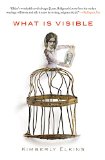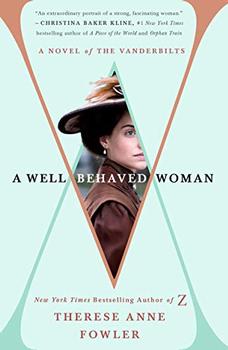Summary | Excerpt | Reviews | Beyond the book | Read-Alikes | Genres & Themes | Author Bio

A vividly original literary novel based on the astounding true-life story of Laura Bridgman, the first deaf and blind person who learned language and blazed a trail for Helen Keller.
At age two, Laura Bridgman lost four of her five senses to scarlet fever. At age seven, she was taken to Perkins Institute in Boston to determine if a child so terribly afflicted could be taught. At age twelve, Charles Dickens declared her his prime interest for visiting America. And by age twenty, she was considered the nineteenth century's second most famous woman, having mastered language and charmed the world with her brilliance. Not since The Diving Bell and the Butterfly has a book proven so profoundly moving in illuminating the challenges of living in a completely unique inner world.
With Laura - by turns mischievous, temperamental, and witty - as the book's primary narrator, the fascinating kaleidoscope of characters includes the founder of Perkins Institute, Samuel Gridley Howe, with whom she was in love; his wife, the glamorous Julia Ward Howe, a renowned writer, abolitionist, and suffragist; Laura's beloved teacher, who married a missionary and died insane from syphilis; an Irish orphan with whom Laura had a tumultuous affair; Annie Sullivan; and even the young Helen Keller.
Deeply enthralling and rich with lyricism, What Is Visible chronicles the breathtaking experiment that Laura Bridgman embodied and its links to the great social, philosophical, theological, and educational changes rocking Victorian America. Given Laura's worldwide fame in the nineteenth century, it is astonishing that she has been virtually erased from history. What Is Visible will set the record straight.
What is visible here? Not only the myriad developments of a half century in American history and the whole span of a remarkable existence, but also a glimpse into how love and purpose can make any life worthwhile...continued
Full Review
 (985 words)
(985 words)
(Reviewed by Rebecca Foster).
Deafblindness is either congenital (present from birth) or acquired later in life. It can be attributed to many causes including rubella, glaucoma, cataracts, diabetic retinopathy, and premature birth. Deafblindness is not one monolithic condition; it varies in severity or completeness: some people maintain limited use of one or both senses. Both Laura Bridgman (the subject of Kimberly Elkins's What Is Visible) and Helen Keller could see and hear until the age of two, when severe illness struck.
There are many ways of communicating with the deafblind. For those with residual hearing, clear speaking or hearing aids can make a difference. For those with limited sight, lipreading, large print writing, or sign language performed in their ...

If you liked What Is Visible, try these:

by Clare Beams
Published 2021
Sarah Waters meets Red Clocks in this searing novel, set at an all-girl school in 19th century Massachusetts, which probes the timeless question: who gets to control a woman's body and why.

by Therese Anne Fowler
Published 2019
The riveting novel of iron-willed Alva Vanderbilt and her illustrious family as they rule Gilded-Age New York, from the New York Times bestselling author of Z: A Novel of Zelda Fitzgerald.